2020
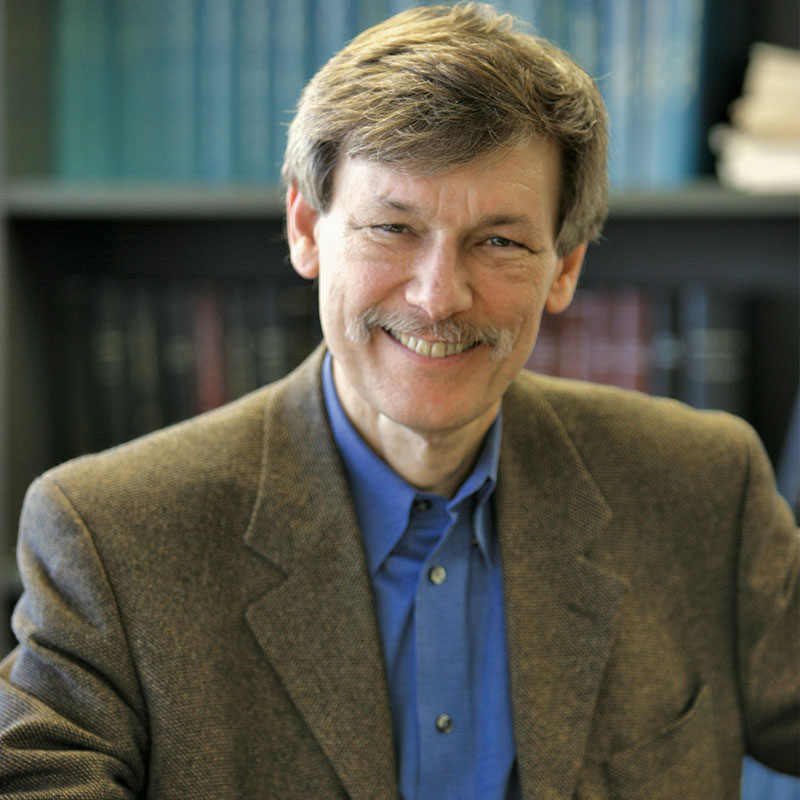
Dr. Avram Bar-Cohen, known to everyone at DARPA as Avi, sadly passed away on October 10, 2020, at the age of 74. Avi served as an MTO program manager from 2010 to 2015. He was a world-renowned expert in electronics thermal management whose career spanned industry, academia, and government over five decades.
Avi was born in 1946 in Brooklyn, NY. Early in life it was clear that he was becoming an accomplished student and athlete, especially soccer, playing in high school and on club teams in Brooklyn. While playing soccer at a New York summer camp in 1962, Avi met his wife, Anat, and they began their 58-year relationship together. Avi graduated from the Abraham Lincoln High School in 1963 and enrolled at the Massachusetts Institute of Technology where he studied Mechanical Engineering. Avi completed his joint BS and MS degrees in 1968 with a minor in Management of Technology.
That same year, Avi began his career in industry in the Missile Systems Division of Raytheon Company where his projects included high power laser systems. While at Raytheon, Avi also completed his Ph.D. at MIT in 1971, with his dissertation entitled Boiling and Condensation in a Liquid-Filled Enclosure. In his free time, he managed to squeeze in a stint as a semi-professional soccer player for the Boston Tigers in the American Soccer League and enjoy the birth of the first of their three children.
In 1972, Avi left Raytheon for academia, joining the faculty at the then fledgling Ben Gurion University of the Negev (BGU) in Israel as one of the founding members of its engineering program. There Avi began his research on electronics thermal management. While at Ben Gurion, Avi co-authored the first of his two books with Alan Kraus, Thermal Analysis and Control of Electronics Equipment. Avi remained involved with BGU, with his many students, colleagues and with binational programs in Israel for his entire life. The geodesic dome he and Anat physically helped build in the desert town of Omer was a testament to heat transfer principles, energy conservation and aesthetic beauty.
In 1984, Avi returned to industry and the United States as General Manager and Executive Consultant for packaging and physical modeling at Control Data Corporation in Minneapolis, MN. Soon after in 1986, Avi joined the faculty at the University of Minnesota, first part time, and then full time in 1989. While at Minnesota, Avi and Alan Kraus published their second book in 1995, Design and Analysis of Heat Sinks, which remains a key reference for thermal scientists. While at Minnesota Avi played a key role as the Director of the College’s Center for the Development of Technological Leadership from 1998 to 2001.
In 2001, Avi became chair of the Department of Mechanical Engineering at the University of Maryland, a post he held until 2010. Avi worked tirelessly to build up the department and also continued his own research. During this time, he intensified his work on electronics thermal management, arguing for a new generation of thermal management approaches centered on the idea of embedded cooling. In his 2011 American Society of Mechanical Engineers (ASME) paper with Karl Geisler, “Cooling the Electronic Brain”, Avi laid out the case for why electronics should be cooled in the same way as the body’s most concentrated heat source, the brain. Similarly in his 2010 plenary session at the ASME International Mechanical Engineering Congress and Exposition, Avi gave a famous talk entitled, “No Guts, No Glory”, arguing for an aggressive approach to electronics thermal management and technology problems in general.
It was with this same spirit that Avi began his time at DARPA in 2010. Avi was determined to show that aggressive thermal management can remove the thermal limitations of high-performance electronics, thus pushing their computing, RF, or optical performance to their electronic and material limits. In pursuit of these goals, Avi started and led the Intrachip Enhanced Cooling (ICECool) program, which aimed to enhance the performance of electronic systems through the application of chip-scale heat removal. This program, launched in 2013, engaged both the fundamental research community on microfluidic two-phase cooling in the ICECool Fundamentals thrust and the industrial research community on near-term applications of embedded cooling in the ICECool Applications thrust. ICECool followed from Avi’s Near Junction Thermal Transport (NJTT) program, started in 2011. Avi also served as the program manager for many other programs including Thermal Management Technologies (TMT), Semiconductor Technology Advanced Research Network (STARNet), a portfolio of advanced studies in laser diodes, as well as dozens of seedling efforts on topics such as phonon engineering, thermal-electrical-mechanical co-design, and heterogeneous integration. While at DARPA, Avi was awarded the Institute of Electrical and Electronic Engineers (IEEE) Components, Packaging, and Manufacturing Technology (CPMT) Field Award, the highest honor that the IEEE can bestow in the field of electronics packaging, in recognition of his significant contributions to components, electronic packaging or manufacturing technologies. Despite being one of the most accomplished PMs in MTO, Avi was known for his approachability and easy-going manner, while still maintaining a laser focus. Once when discussing a presentation he was preparing with his support team, Avi displayed both of these characteristics, telling the team, “It is important that we be as quantitative as possible anytime we present to a technical audience …” and then, smiling, “… plus people know I am a numbers guy and when they see me they expect to see numbers, so I don’t want to disappoint them.”
In 2016, Avi joined Raytheon Space and Airborne Systems as a Principal Engineering Fellow. Avi contributed to research and development efforts and programs of record in areas spanning high power lasers, heterogeneous integration, hypersonic vehicles, and advanced RF including GaN devices. Avi worked to improve engineers’ access to advanced modeling and simulation tools and served as a mentor to countless junior and mid-career staff, often making time in the evening or late at night to respond to an email or jump on the phone for a quick call. While at Raytheon, Avi was the President of the IEEE Electronics Packaging Society (EPS) and also served as the Editor-in-Chief of Encyclopedia of Thermal Packaging, a four-set, 17-volume work covering topics from advanced heat sink design to thermal management of radar systems. Avi continued to be a fixture in DARPA activities and participated in a workshop on heterogeneous integration as an invited speaker at the Electronics Research Initiative (ERI) Summit in August of 2020.
Avi’s body of work, publications, awards, and professional society contributions, is immense. His Google Scholar page lists over 1,200 articles, books, and patents that have been cited more than 11,000 times. In addition to the IEEE CPMT Field Award, Avi was a Life Fellow of the IEEE and ASME and became a member of the European Union Academy of Sciences in 2020.
While Avi was justifiably proud of his professional success, he was equally focused on his family. He relished time with his wife, Anat, his three children, Barak, Raanan, and Talia, their spouses, and his seven grandchildren. Avi always tried to route his travel to create chances for visits, and photos of his grandchildren were a mainstay at his office. Avi and Anat regularly opened their home to Avi’s students and his DARPA team for parties, and Avi was always happy to grab coffee – even if it wasn’t clear whether or not he ever actually ate lunch.
DARPA, the country, and the field of thermal science and engineering is indebted to Avi for his service. He will be profoundly missed.
2019
Albert Edward Brandenstein, PhD (1937-2019) Dr. Albert E. Brandenstein of Herndon, VA, passed away peacefully in his home on Sunday, February 24, 2019, after a long illness. He was a loving husband and father to his wife, June; and his daughter, Margaret, and son, AJ, respectively. He also is survived by his sister, Rhoda, and four grandchildren; Haven, Catherine, Luke and Penny. Dr Brandenstein was born on September 24, 1937, in Hollis, NY. He received a Bachelor’s degree in science from Brooklyn Polytechnic Institute and a Master’s degree from Columbia University. Doctorate in Electrical Engineering from Oregon State University in 1969. Shortly thereafter, he was employed by the Electromagnetic Systems Laboratory (aka ESL Incorporated), Mountain View, CA, where he served as a field engineer and site manager in charge of selected advanced electronic equipment at various US Military Installations in the Republic of South Korea.
By 1977, Dr Brandenstein had joined the Center For Naval Analysis (CNA) and his assignment was to assist the Pacific Fleet Commander, ADM Thomas B. Hayward, with the development of war plans for the Fleet. He was exceptionally skilled at the kind of intricate and detailed analyses necessary for the job. The Admiral put Dr Brandenstein and CAPT James M. Patton, USN, together to examine the existing war plan, determine its flaws, and begin the development of a new plan that would be executable, comprehensive and realistic. The Admiral felt that the current plan that had existed for some time was none of those things. This war plan, to which Dr Brandenstein contributed so much to, became the famous US Maritime Strategy of the 1980’s and historians consider it to have contributed importantly to the ultimate collapse of the Soviet Union.
When ADM Hayward was selected by President Carter in 1978 to become the Chief of Naval Operations — the highest ranking officer of the US Navy – Dr. Brandenstein became the Admiral’s Technology Advisor.
After the Admiral retired in 1982, Dr. Brandenstein began his government service, which spanned more than 20 years in the metropolitan Washington DC area. He first served as the Deputy Office Director for the Strategic Technology Office at the Defense Advanced Research Projects Agency (DARPA). There, he guided and directed a team of program managers developing advanced technologies and capabilities demonstrations for C4ISR and NonAcoustic ASW operations like TEAL RUBY, TEAL JADE, and the “Virginia Slims,” the first miniature military Global Positioning System (GPS) receiver.
In 1991, Dr. Brandenstein became the Director, Counter-Drug Technology Assessment Center (CTAC), and Chief Scientist for the Office of National Drug Control Policy (ONDCP) within the Executive Office of the President. There, he directed a technology program to combat drug abuse from an enforcement perspective by providing technology to federal, state and local law enforcement agencies. In addition, he funded advanced research into the causes of addiction and abuse through brain imaging technology and innovative treatment development.
Following his retirement from government service in 2004, Dr. Brandenstein remained active as a respected expert and advisor to the Aerospace Community. He also continued his “learning passion,” focusing on technology, history and politics, as well as his favorite hobby, singing in his church choir. “Dr. B” will be greatly missed by his family, friends and colleagues.
2018
Dr. Bernard “Bud” Durand of Springfield, Virginia, died in the arms of his beloved wife, Cheryl Durand, the morning of December 20, 2018 in Fairfax, Virginia, at the age of 74. Diagnosed with amyloidosis in 2013, and given a prognosis of approximately one year, Bud fought the disease successfully for 5 years.
Bud was born on December 16, 1944 in Harrisburg (lived in Wilkes-Barre), Pennsylvania, to Margaret “Peggy” and Bernard “Bud” Durand. When he was still an infant, his family moved to Northeast Washington, DC. His sister Margo Durand was born in 1949. The family also lived in Southwest DC for a few years, then moved to Oxon Hill, MD in 1955. Bud was an Eagle Scout and had various part-time jobs throughout his later childhood. He received his primary and secondary education from Catholic schools, graduating as valedictorian of his senior class at Mackin High School in 1962. Bud attended Catholic University, was a member of Sigma Pi Delta fraternity, completed the Air Force ROTC program, and graduated with a Bachelor of Science in Electronic Engineering and commission in the Air Force as a second lieutenant.
Bud fell in love with Cheryl Chaney and married her in 1966 before he finished college. They were the first couple to be married in the Our Lady of Angels Catholic Church Hall in Woodbridge, VA. After graduation, the two of them moved to Del Rio Texas in 1967 for his first Air Force assignment – flight school at Laughlin Air Force Base. Bud dreamed of being an astronaut, and later a commercial pilot; unfortunately, he had a vision problem that kept him from finishing flight school, and ended his dream of being an astronaut. Luckily, Bud was assigned to the Apollo Program at the National Aeronautics and Space Administration (NASA) in Houston. Bud became the flight controller for the primary guidance and navigation system for the lunar lander, or lunar excursion module (LEM or LM). This was the highlight of his career. Not only did he have a front seat at Mission Control during Neil Armstrong’s historic first step (Apollo 11), but he also experienced a synergistic and exciting work environment that he would never see again in his career. He was on the Extravehicular Activity (EVA) Team for the Apollo 12 mission, and was on the console when Conrad and Bean were out on the lunar surface. It was there that Pete Conrad became one of Bud’s biggest heroes – he was extremely impressed with Conrad’s ability to remain cool under pressure, and held him to be the “best of the best.” During the Apollo 13 mission, Bud said the explosion made the jobs of the flight controllers extremely important, and he was proud to be a part of the team that brought our astronauts safely home. Bud was among those team members who received the Presidential Medal of Freedom, and he received numerous achievement and meritorious service awards during his assignment with NASA. During the Apollo 14 mission, Bud solved a problem with the radar not locking onto the lunar surface as it should have. Bud’s time with the space program further strengthened the exceptional work ethic he developed in Catholic school, and caused him to develop high expectations of those around him. Despite loving the space program, after Apollo 14, Bud knew it would be months and months before the next mission, so he decided to go to grad school.
Bud and Cheryl had three children while stationed in Texas – Dawn in 1967, James in 1968, and Joseph in 1969. They lived in Houston until they moved their family of five to Cerritos, California, in May 1971. Bud attended graduate school at University of Southern California in Los Angeles, where he earned his Master’s in Business Administration. After grad school he was assigned to the Air Force Satellite Control Facility. Bud and Cheryl’s fourth child, John Gabriel, was born in Long Beach in 1975. Although the assignment in Los Angeles was not as exciting as the one at NASA, the years the family spent in California were some of their best memories. Bud and Cheryl took the kids camping, they visited all of the major sites between San Diego to San Francisco, and they visited with Bud’s parents in San Jose frequently.
In 1977 Bud took an assignment with the Air Staff at the Pentagon, and the family moved to Springfield, Virginia. In 1978, Bud went into the Air Force Reserves and took a civil service job with the Defense Advanced Research Projects Agency (DARPA). He stayed at DARPA for almost 24 years, finishing up as the Director of the Office of Administration and Small Business. While at DARPA, Bud earned his doctorate in Public Administration through the University of Southern California’s satellite campus in Washington, DC. In August of 2002, Bud retired from civil service and took a position as an independent contractor with the Counter-Intelligence Field Activity, and later worked for the Defense Security Service.
During “full” retirement, he was vice president of his home owners’ association, a member of the Citizens Advisory Council, was a member of the neighborhood watch, was a trained member of the Citizen’s Emergency Response Team, and volunteered many hours at the United Services Organization (USO) lounge for military members with his wife Cheryl at Reagan National Airport in Washington, DC. Bud enjoyed spending time with family, camping, fishing, playing cards, and hanging out with his friends at McDonald’s on Saturday mornings. He loved to travel, and thoroughly enjoyed family trips to the Mediterranean, Alaska, Cape May, Chincoteague, and Tampa Bay. He was physically active all his life, sticking to the regimented routine of physical fitness he learned in the military. He shared his love for astronomy and space exploration with his four children and his grandchildren. Bud was an avid reader, and huge fan of science fiction, mysteries, and non-fiction. He authored two spy thrillers of his own: Traces of Mammon, published by 2012, and Ask Any Aardvark, published in 2013. He was a devoted husband, father of four, grandfather of seven, great-grandfather of one, son, brother, and friend. He will be greatly missed and fondly remembered by all those he has left behind.
2017
Surrounded by the love of his family, Paul S. Kozemchak, age 69, died on November 10 2017, from injuries sustained after being struck by an automobile while crossing the street outside his office in Arlington a week earlier. PK, as he was known to his friends, was among the longest serving members of the Defense Advanced Research Projects Agency (DARPA), where he had served for nearly 28 years as an advisor to successive Directors, especially concerning matters related to the Intelligence Community. Over the course of his career, Paul built coalitions between the U.S. government, international partners, private sector, and universities to address some of the most sensitive security and technology issues facing our nation.
Born on February 29, 1948, in Allentown, Pennsylvania, Paul was the son of the late Peter J. Kozemchak and Florentina T. (Zahurak) of Emmaus. He attended a Catholic primary school and Liberty High School. During sophomore English class in 1962, he met Stephanie Kozemchak (Sikorski) of Bethlehem, Pennsylvania. The two dated that summer while Stephanie worked as a lifeguard at the pool near Paul’s childhood home. After high school, Paul went on to pursue undergraduate studies in engineering mechanics at Lehigh University, where he was a member of the Kappa Sigma fraternity. While there, he reconnected with Stephanie, and the two married in 1969. The newlyweds moved to Florida, though Paul returned to Lehigh University to complete a master’s degree in international relations. While working as an experimental engineer in Florida, Paul, ever a risk taker, could often be found feeding peanut butter crackers to the alligators during lunch breaks. Then, the couple headed to Chicago, Illinois, where Paul continued graduate studies in applied mathematics and international relations. At nights, he worked as a computer assistant in Argonne National Laboratory supporting research focused on sickle cell anemia. As a student at the University of Chicago in the early 70s, Paul studied under Dr. Albert Wohlstetter, a leader in nuclear strategy.
In 1974, Paul came to Washington, DC to work as an analyst and strategy advisor, beginning to guide technology implementation and security policy. Paul and Stephanie moved to the Lake Barcroft community in Falls Church, Virginia in 1976, where they started a family. Paul loved spending afternoons on the lake and often remarked on how peaceful he felt there. In 1982, Paul took a position at Pan Heuristics with his mentor, Wohlstetter. While there, he served as the Task Leader for the Department of Defense (DOD) Future Security Strategy Study and advised on the President’s Commission on Integrated Long-Term Strategy. In 1990, he joined DARPA. There, he was involved in the development of sensor systems, command and control, precision guidance, and stealth technologies that helped realize the “offset strategy” to counter Warsaw Pact advantages in numerical strength. In his continued work at DARPA, Paul became a strong advocate for the use of advanced technology, as only DARPA could seed for the benefit of national security, together with mathematical analysis, data analytics, and rational analytic thought imbued with historical understanding.
His devotion to counter proliferation and national security was evidenced by his participation as a member of the Expert Advisory Group to the Director of National Intelligence’s (DNI’s) Scientific and Technical Intelligence Committee; the DNI’s Intelligence Community Strategic Studies Group; and an advisor to the National Intelligence University. He worked with the National Intelligence Council on Global Trends studies, and served as a government advisor on multiple Defense Science Boards including: DOD 21st Century R&D Strategy; Countering Proliferation (Executive Secretary); Transnational Threats; Desert Storm Lessons Learned; and the Discriminate Use of Force.
He was passionate about making an impact for future generations, while often downplaying his own accomplishments. In 2009, Paul was awarded the Office of the Secretary of Defense Medal for Exceptional Civilian Service. His continuing contributions lead the US Naval Special Warfare Command (the Navy SEALs) to designate him as an Honorary Frogman in 2016. Paul counseled and mentored countless program managers at DARPA and throughout DOD and the intelligence community; daring them to excel, to allow outlandish ideas due consideration and helping to foster technology and security leadership. In 2017, the National Intelligence University dedicated the Science & Technology Intelligence library in his honor, recognizing Paul’s effort to strengthen the position of current and future intelligence analysts. Paul’s wish, as he put it, would be that they wield the sword of surprise and none of their fights be fair.
Outside of professional settings, Paul enjoyed strategy games and classical music. Ever proud of his family, he cheered the athletic, artistic, and academic pursuits of his children and grandchildren. Paul completed his first Marine Corps Marathon in 1997 and became an avid runner, participating in a number of marathons and races over the last 20 years. He encouraged discourse and debate, earning a reputation as a gadfly by posing provocative questions and challenging experts on their assumptions through his participation in frequent industry and government associations. Paul exhibited a wicked sense of humor and an infectious laugh; those who knew him can almost still hear him saying: “You can’t make this stuff up.” Paul possessed a deep love for others, a profound respect for history, and drive for innovation that he channeled to the cause of leaving the nation safer and the world a better place.
He is survived by three children who were with him to the end; Christopher of Falls Church, Virginia, Kyra Fussell and her husband Jarrett of Annandale,Virginia, Christiana Hardy and her husband Richard of Springfield, Virginia; and five grandchildren, nieces and nephews. His 42-year marriage to Stephanie Kozemchak ended in divorce in 2012.
Menlo Park resident Mark Rich, 58, the husband of former Menlo Park City School District board member Laura Rich, was killed in a small-plane crash on Saturday, Aug. 19, 2017 , friends of the family have confirmed.
Mr. Rich’s single-engine, home-built Wheeler Express crashed under unknown circumstances near the Madras, Oregon, airport around 1:50 p.m., according to Federal Aviation Administration spokesman Ian Gregor.
Mr. Rich, a vice president of Connect Fleet in Airbus and a Silicon Valley veteran who had worked at companies including Google, DARPA and Atheros, had been on his way to watch the Aug. 21 solar eclipse.
Menlo Park City School District board member Terry Thygesen, who had served on the board with Laura Rich, said Mr. Rich had built the plane himself decades ago. “He was a very experienced pilot and he had flown that plane a lot over the years,” she said.
“Mark Rich was a truly amazing person and the world has lost someone very special in this tragic accident,” Ms. Thygesen said. “Mark possessed a singularly brilliant mind,” she said.
Mark and Laura Rich met when she was an undergraduate at Stanford University and he was a graduate student. They married soon after her graduation, 33 years ago.
“He was a truly loving husband to his wife, Laura Linkletter Rich … and he was a devoted father to their two children,” Ms. Thygesen said. Son Tyler Rich lives in Austin, Texas, and daughter Michelle Rich lives in New York City. Both are graduates of Menlo Park schools and Menlo-Atherton High School.
Mr. Rich “was a truly amazing person,” Ms. Thygesen said. “He was an engineers’ engineer,” she said. “Not only was he a super-smart technical person and a very creative and inventive technical person, but he was a Renaissance man and he knew a lot about a lot of things,” she said.
“He was a very smart, very interesting guy. He was very quiet … but once you got to know him you realize he was really smart about a lot of things and had a really great sense of humor.”
A statement posted by Jefferson County officials in Oregon says the plane was fully engulfed in flames when first responders arrived on the scene, near the top of Willow Creek canyon about a mile from the Madras Airport. A small fire was started by the crash but quickly extinguished. The plane was completely destroyed, the statement says.
County officials had initially stated there were two people aboard the plane, but their investigation determined Mr. Rich was alone.
Family friends say Mr. Rich’s daughter had initially planned to go on the trip, but had not been able to go.
The Oregon State Police, Jefferson County Fire Department, BNSF Railroad and EMS personnel, as well as local volunteers, assisted at the crash site.
An investigation into the cause of the crash by federal aviation officials is ongoing.
In lieu of flowers, the family prefers that memorial donations be made to the Peninsula Open Space Trust (POST).
Frank Patten
Francis “Frank” Patten, 82, a physicist who retired in 2014 from the Defense Advanced Research Projects Agency (DARPA), died May 30, 2017 at a hospice center in Prince Frederick, Md. The cause was osteosarcoma, a form of bone cancer, said his wife, Margery Patten.
Dr. Patten, a resident of Owings, Md., was born in Fall River, Mass. In 1960, he joined the Naval Research Laboratory, where he later headed the optical-materials branch of the solid-state division. In 1980 he moved to DARPA, where he worked in the strategic-technology office. He was a member of the Surratt Society, a volunteer organization that supports the historic Surratt House in Prince George’s County, Md., and the Providence-Fort Washington United Methodist Church.
Sherman Karp (1935-2017)
On May 16, 2017, we lost a great colleague and friend, Sherman Karp. Sherman was a pioneer in optical communications. He initiated and developed the first successful proof-of-principal demonstration of submarine laser communication technology for the Navy. He established the Miniature Global Positioning System (GPS) Receiver (MGR) program at the Defense Advanced Research Projects Agency (DARPA), which demonstrated the first software-defined radio. The success of the DARPA MGR program then enabled the development and widespread operational deployment of the Precision Lightweight GPS Receiver (PLGR) to the US Army and Marine Corps. MGR technology then became available for commercial development of hand-held, battery-operated, personal GPS receivers.
Sherman was unique in his instinctive ability to first identify and conceive an approach to advance a technology opportunity well beyond then perceived limitations. He would develop an approach with adequate theoretical support, perform the analyses with the necessary performance measures, and advocate successfully for his initiative. Sherman organized and led the development of the components and system as well as the conduct and analysis of results provided by both laboratory and field tests.
Sherman was born in Brooklyn, New York City, on October 12, 1935 and served in the U.S. Navy as an electronics technician from 1952-1956. Sherman received his BSEE (1960) and MSEE (1963) degrees from MIT, and a PhD (1967) in optical communications from the University of Southern California (USC). While completing his PhD, Sherman worked for the Douglas Aircraft Company, Santa Monica, CA, (now, the Boeing Company) in advanced radar and optical communications systems.
In 1967, Dr. Karp started his professional career as a government R&D engineer and project manager. Sherman began at the NASA Electronic Research Center, Cambridge, MA, where he continued his research in optical communications and ranging systems. When this facility became the DOT Transportation Systems Center, Sherman became the Technical Director of the 4th Generation Air Traffic Control (ATC) Study and leader of multi-path VHF measurements for mobile communications.
Completing these efforts, Sherman transferred to the Naval Electronic Laboratory Center (NELC, now SPAWAR Systems Center Pacific) in San Diego, CA where he concentrated on blue/green laser communications from satellites to submarines.
Here he provided the theoretical foundation/ analysis, experimental design, and leadership of the first successful field demonstration of submarine laser communication technology for the Navy.
In 1978, Sherman relocated to Washington, DC, as a Program Manager at DARPA where he led programs in Advanced Digital Signal Processing and Processors. He was the architect for the Gallium Arsenide Digital Circuit Development program, and established the DARPA MGR Program (aka the “Virginia Slims” GPS Receiver Program). The MGR successfully demonstrated the first ever, hand-held, battery-operated, military-grade, GPS receiver (an all-digital GPS signal processor and a hybrid analog RF-digital A/D chip set). This technology quickly became available to commercial GPS receiver developers with a wide variety of usages and (with developments in chip circuit density, clock speed, and unit cost reduction) found its way into today’s smart phones.
Following his retirement from Government service in 1986, Sherman became a consultant to several aerospace companies supporting US Government Agencies, such as the ONDCP, DARPA and NSA.
His scholastic honors include Tau Beta Pi, Eta Kappa Nu and Sigma Xi. His professional societies include Life Fellow of the IEEE, active member of the IEEE Communications Society, Chairman of Technical Committee on Communications Theory (1979-1986), member of the IEEE FCC Liaison Committee, the Editorial Board of the IEEE Proceedings, and the Fellows Nominating Committee, Washington Section. He was a Co-Editor of a Special Edition of the IEEE Proceedings covering all the FAA on-going ATC technology developments (Oct ’70), and Co-Editor of a Special Issue of the IEEE Transactions on Communications Technology (May ’73). His professional awards include the NELC Scientist of the Year Award, the Secretary of Defense Medal for Meritorious Civilian Service and the Engineering Science Award from the Washington Academy of Sciences. He was a member of the American Association of the Advancement of Science (AAAS), Scientific Freedom and Responsibility Award Panel and the Cosmos Club.
Sherman has over thirty technical publications (two selected as benchmark papers in optical communications). He also is the co-author of four books: Fundamentals of Electro-Optic Systems Design: Communications, Lidar, and Imaging with L.B. Stotts (2013); Optical Channels: Fiber, Atmosphere, Water and Clouds with R. M. Gagliardi, S. E. Moran and L. B. Stotts (1988); Optical Communications, First and Second Edition, with R. M. Gagliardi (1976 and 1995) and Optical Space Communications with R. S Kennedy (1970).
Sherman is survived by his wife of 56 years, Joan, daughter Jennifer, son Sam, daughter-in-law Risa and granddaughter Iona. Sherman will be greatly missed.
Dr. Howard Frank, inducted in 2013 as a “Pioneer” to the Internet Hall of Fame for fundamental contributions to the development of the Internet, and recipient of the Department of Defense’s highest civil honor, a Presidential Distinguished Service Medal, died Monday, May 1, 2017, of complications resulting from a bacterial infection. He was 75.
In 1970, Frank started his entrepreneurial career with the founding of Network Analysis Corporation, following his tenure as Assistant Professor of Engineering and Computer Science at the University of California, Berkeley. After serving as a special consultant to the Executive Office of the President and other governmental agencies, he continued his work in telecommunications as President and CEO of Contel Information Systems, a subsidiary of Contel Corporation (1969-1985) and Founder, CEO and President of Network Management Inc. (“NMI”) (1985-1990).
Frank then left his corporate career to again contribute his expertise in information technology to the government, as Director of the Information Technology Office, Defense Advanced Research Project Agency (“DARPA”), and Founding Director of the Defense Department’s Advanced Information Technology Services Joint Program (1994-1997). The final stage of his long career began in 1997 with his appointment as Dean of the Robert H. Smith School of Business, University of Maryland, College Park. He retired from the Business School faculty as full Professor in 2015.
Known by all as a strong leader with vision and tremendous energy, as Dean, Dr. Frank incorporated technology into every aspect of the University’s curriculum and dramatically grew the school’s national rank and reputation to a top 10 U.S. business school. Over his career, he wrote two textbooks, was member of dozens of editorial and corporate boards, contributed hundreds of technical papers to academic journals and books, and was a regular featured speaker and expert commentator on matters relating to information technologies and telecommunications.
He also was a renowned avid collector and fan of fantasy and science fiction visual art and literature, holding one of the world’s largest private collections, and co-authored two compendium art books with his wife, Jane, featuring selections from the collection.
Dr. Frank is survived by his wife, Jane Frank, of 52 years, three children (David, Laura, and Erica), and four grandchildren (David Douglas, Jr., Jennifer, Eve, Sarah).
2015
Wesley M. Kurowski, COL. USAF (Ret.)
Passed on November 14, 2015
On November 14, 2015, Colonel (Retired) Wesley M. Kurowski passed away due to complications from a stroke. Wes is survived by his wife of 56 years, Donna, of Falls Church, VA and his children Glenn, Lisa and Beth.
Wes was born on February 12th, 1938 and grew up in Glenshaw, a suburb of Pittsburgh PA. He remained a devoted Steelers fan and loved his Iron City. He graduated from Grove City College with a degree in Electrical Engineering and through the AFROTC program was commissioned a Second Lieutenant into the United States Air Force. In 1963 he earned a Masters Degree in Guidance and Control at AFIT (Air Force Institute of Technology) in Dayton, OH. A true and dedicated patriot, Wes was active duty in the Air Force for over 25 years. Upon retirement from the Air Force as a Colonel, he then spent the rest of his career serving our military in private industry.
Married in 1959 to his childhood sweetheart, Donna, they had a special partnership that saw them live the life of an Air Force family in many parts of America. They raised three children, and enjoyed retirement with eight grandchildren, all of whom loved their “granddaddy”.
Wes was a remarkable man. There was nothing he could not fix with his engineering knowledge. But interestingly, it was artistry blended with engineering that emerged in his hobbies. When he looked at a piece of wood, he didn’t see a knot as something to avoid. Rather it was a unique characteristic of the wood which could enhance the beauty of a piece of furniture. Similar to what he looked for in people, he liked “good character” in wood and the things he built. Wes made desks and armoires; shelves and cabinets; holders and plaques and tool-boxes; He turned candlesticks and ornate pens on his lathe. He made miniature bird houses, miniature model homes, restored trains, built coin memorabilia holders and a variety of unique projects that made his home and his workshop such an interesting place while providing many with wonderful and useful handcrafted pieces.
Anyone who spent time with Wes learned he was a man of few words. When he spoke – his few words were profound and insightful, or a different view of the issue laced with his dry wit and humor.
Dr. Alan Magill, COL. USA (Ret.)
Passed on September 19, 2015
Alan served for 26 years in the U.S. Army Medical Corp as an infectious disease doctor and medical researcher. He retired as a Colonel after taking part in and leading many research endeavors to develop drugs and diagnostics to fight malaria and other tropical diseases. During Operation Desert Storm in Kuwait, he helped the Army recognize leishmaniasis affecting US Service Members, a finding that led to further important research and many changes in policy to protect the force. COL Magill researched and reported on the enormous impact of malaria on deployed service members in Somalia during Operation Restore Hope, 1992 to 1994. Dr. Magill has also served as Head of Parasitology at the US Naval Medical Research Center’s unit in Lima, Peru and worked in Germany, where he served as a clinician.
The Military Infectious Diseases Research Program (MIDRP) at the US Army Medical Research and Materiel Command (USAMRMC) assigned him many leadership roles in their work to prevent the mission-stopping impact of infectious diseases on the health of the force. For the Department of Health and Human Services, the National Institute of Allergy and Infectious Disease (NIAID at NIH) and the FDA both sought his insights and expertise in tropical medicine. He also served as president of both the International Society of Travel Medicine and the American Society of Tropical Medicine and Hygiene (ASTMH).
At Walter Reed Army Institute of Research Dr. Magill served as medical researcher and leader in various capacities in the then Division of Communicable Diseases and Immunology, as WRAIR science director and director of the Division of Experimental Therapeutics. In 2012, Dr. Magill took his innovative approaches to the Defense Advanced Research Program Agency (DARPA), and was responsible for accelerating program development for their pandemic influenza initiative.
He passed away near his home in Woodway, Washington, where he had moved with his family to serve the purpose of global health as Director of Malaria Programs at the Bill and Melinda Gates Foundation.
Dr. Magill’s love of family and his willingness to always listen, in enjoyment or sympathy, will be missed by all who knew him. He was inspired and inspired us to create a better world and especially one free of malaria.
Noted by those at the Bill and Melinda Gates Foundation:
“Alan’s tenderness, goofiness, and unconditional love grounded us. His uncanny ability to see into our hearts made him an incredibly compassionate man who would always listen and always hold us. His strength and drive made him unbeatable at board games, miniature golf, and poker, while his love for adventure and the great outdoors took him to some of the most wild and beautiful places in the world.”
Paul McLean, CSM, USA (Ret.)
Passed on September 14, 2015
Paul McLean for those who did not know him, worked at DARPA as Chief, Visual Media and Mail Services. His picture is attached. His working life was dedicated to his country as a soldier, contractor and civil servant. Paul spent 28 years in U.S. Army. Paul then worked at DARPA as a contractor/government employee for the past 24 years, for a total of 52 years of service.
He is predeceased by his wife Diane and is survived by his daughter Laura, son Paul McLean III and several grandchildren.
Working at DARPA meant the world to Paul. One of the last things Paul communicated to his leadership was: “My time at DARPA as a contractor and as a government employee have been the most fulfilling in my life, due mainly to the DARPA sense of being a FAMILY”
Benjamin Wilcox
Passed on March 11, 2015
Ben Wilcox of McLean, VA died Wednesday, March 11, 2015 at age 80. He was born in Anaconda, Montana in 1934. Dr. Wilcox rose to prominence in the fields of metallurgy and materials science at the Department of Defense, National Science Foundation (NSF), and Battelle Memorial Institute (Columbus, OH). Among his contributions, he conducted research and provided government support for research which led to the creation of new aerospace structural materials (such as heat shields for the Space Shuttle), improving body armor for military troops, employing laser technology to harden aerospace metals, and the development of ultra lightweight metals for use in aerospace and automobiles. He was awarded a Ph.D. in Materials Science at Stanford University in 1962 and retired from the Defense Advanced Research Projects Agency (DARPA), in 2000. His lifelong interest in metallurgy originated when he was a boy growing up in the shadow of the Anaconda Copper Mining Co.’s (ACM) smelter and smokestack, said by some to be the tallest smokestack in the world at the time. His father, Harley Wilcox, was a chemist for ACM; his mother, Isabel, was a schoolteacher. His interest in metals led him to Washington State College where he earned a B.S. in Physical Metallurgy in 1956 and also joined the Air Force ROTC program. While there, he met his future wife, Jacquelin Ostrom, at a freshman mixer. Upon graduation, he was commissioned as a 2nd Lt. in the U.S. Air Force. Before reporting for active duty he received a two-year deferral and obtained an M.S. in Metallurgical Engineering in 1958 at Stanford University. From Stanford, he reported for active duty at the Air Force Materials Laboratory, Wright Patterson Air Force Base, Ohio, where he served as a Program Officer for three years. Wilcox conducted research on high temperature aerospace materials and managed programs conducted by industry and university contractors. His research on deformation of aerospace refractory metals served as the basis for his Ph.D. thesis. After receiving his Ph.D. from Stanford, he was awarded a one-year post-doctoral Fellowship from the National Science Foundation to conduct research in the Metallurgy Department at Cambridge University, UK. There, he researched the mechanisms of hydrogen embrittlement of metals. At Cambridge, Wilcox became a full-fledged Anglophile and returned to England twice later in his career. In 1963 he joined Battelle as a Research Scientist and later became manager of the Materials Science Department. His research activities focused on deformation and fracture of metals, ceramics, and dispersion and fiber reinforced aerospace materials, pulsed laser shock hardening of metals, and high temperature corrosion of aerospace alloys. Wilcox authored or co-authored numerous technical publications in conference proceedings and archival journals, and also presented many lectures at scientific conferences and seminars worldwide. Wilcox and his family moved to Washington, DC in 1974, where he joined the National Science Foundation as a Program Director in the Division of Materials Research (DMR). He initiated and managed the Ceramics Program, which supported basic university research in structural, electronic, optical and magnetic ceramics. In 1979 he was appointed Head of the Metallurgy, Polymers and Ceramics Section of DMR. He joined DARPA in 1983 as Director of the Materials Science Division of the Defense Science Office (MSD/DSO). During Wilcox’s tenure at DARPA, he provided materials research support to universities, industry, and government laboratories. The broad range of research topics included armor/anti-armor materials, laser-hardened materials, smart materials and structures, high temperature superconductivity for various electronic device applications, solid freeform fabrication of ceramic prototype components, and ultra lightweight (foamed) metals production for aerospace and automotive applications. In 1996, Wilcox was detailed by DARPA to the Office of Naval Research International Field Office-Europe in London, UK, where he was Associate Director, Materials Science. As a scientific liaison officer, Wilcox facilitated collaborations between U.S. and international scientists. He conducted site visits to Materials Science and Engineering (MS&E) academic, industrial, and government laboratories, and he attended conferences and workshops in European, African, and Middle Eastern countries. He published his findings in digital newsletters to MS&E personnel in the U.S. He also provided some ONR financial support for international scientists’ research and international travel to MS&E conferences. During his professional career, Wilcox received numerous awards and honors. Among these was election as a Fellow of the American Ceramic Society in 1979 and Fellow of the American Society for Metals in 1984. He also received various commendations and awards for his achievements from his employers in the government and private sector. Wilcox returned to Washington, DC in 2000, when he retired from the Federal Government. In retirement, he engaged in technical consulting for a number of years, primarily for the Defense Department. Notably, he lead a study for the Institute for Defense Analysis on Identification of DoD Critical Technologies for Materials and Processing Technology. Growing up in “Big Sky” Montana, Ben spent many evenings looking up at the vast, starlit sky, “pondering the universe”. That fascination resurfaced during his retirement years, when he renewed his interest in the field of cosmology. He studied the field extensively, attending lectures and reading current technical and popular cosmology books and articles. Based on this, he wrote an unpublished journal on his research and musings. He is survived by his wife of 60 years, Jackie Wilcox; his daughters and sons-in-law Laura Wilcox and Donald Schwarz of Maryland and Linda and John Jerome of Michigan, and his two grandsons, Martin Peters of Washington, DC and Bret Peters of Michigan. Ben was preceded in death by his son Richard Wilcox. A memorial service will be held for the family on Saturday, March 14 and an inurnment ceremony and celebration of his life will be held at a future date.
2014
George Heilmeier
Passed on April 22 2014
George H. Heilmeier received the BS degree in Electrical Engineering with distinguished honors from the University of Pennsylvania, Philadelphia, and the M.S.E., M.A., and Ph.D. degrees in solid state materials and electronics from Princeton University.
At RCA Laboratories, he did original work in parametric amplification, tunnel diode down converters, millimeter wave generation, ferroelectric thin film devices, organic semiconductors and electro-optics effects in molecular and liquid crystals. He was appointed Head, Solid State Device Research, in 1966 and Head, Device Concepts Research, in 1969. In 1968, he received international recognition for his discovery of several new electro-optic effects in liquid crystals, making possible for the first time the electronic control of the reflection of light. This led to the development of the first liquid crystal displays for calculators, watches, and instrumentation.
Heilmeier was selected by the President to be a White House Fellow for the year 1970-71, serving as Special Assistant to the Secretary of Defense. He was appointed Assistant Director for Defense Research and Engineering, Electronic and Physical Sciences, in September 1971. In this position, he was responsible for all Department of Defense research and exploratory development in the areas of electronics and physical sciences.
In 1975, he was appointed the Director of the Defense Advanced Projects Agency and initiated major efforts in space-based lasers, stealth aircraft, space-based infrared technology, and artificial intelligence applications.
In December 1977, he was named a vice president of Texas Instruments and, in February 1983, he was promoted to Senior Vice President and Chief Technical Officer. In his current position, he is responsible for all TI research, development, and engineering activities.
Heilmeier held 15 U.S. patents and was a member of the National Academy of Engineering, the Defense Science Board, and was Chairman of the Technical Advisory Board of Southern Methodist University. He has received many major awards, including the IEEE David Sarnoff Award, the IEEE Frederik Philips Award, the Secretary of Defense Distinguished Civilian Service Medal (twice), the Eta Kappa Nu Award as the Outstanding Young EE in the U.S., and the 26th Arthur Flemming Award as the Outstanding Young Man in Government. Editor’s Note: Heilmeier received the IEEE Medal of Honor in 1997, “For discovery and initial development of electro-optic effects in liquid crystals.”
Heilmeier’s hobbies were reading and sports. He and his wife, Janet, have one daughter, Elizabeth.
This biography is from IEEE
[youtube]https://youtu.be/0Pf4_L2jxRs[/youtube]
2013
Roger Lee Hall
Roger Lee Hall, of Fairfax, VA, died on Thursday, September 19, 2013, at Fairfax Hospital. He was 57. He was born on January 3, 1956, in Baltimore, Maryland. He was graduated from Fort Pierce Central High School in Fort Pierce, FL in 1974. He received a B.S. in Physics from California State University at Hayward in 1980, a M.S. in Aerospace Engineering from University of Texas at Austin in 1986 and ABD Status, PhD program in Aerospace Engineering in 1991 at Auburn University, Auburn, AL. On October 6, 1976, he married his high school sweetheart, Fumiko Kodama and together they had 2 children, Alan and Kiyomi.
Roger attained the rank of Lieutenant Colonel in the United States Air Force and retired after 25 years active duty service. While serving in the Air Force, Roger served at Cheyenne Mountain space surveillance operations, as faculty at the U.S. Air Force Academy, at the Space and Missiles Systems Center, Air Force Research Laboratory, Space Control Division at the Pentagon and as Program Manager at the Defense Advanced Research Projects Agency’s (DARPA) Tactical Technology Office. After leaving the Air Force, he continued his work in the government and private sector in assignments related to DARPA, including responsibility as Deputy Director DARPA/TTO and at Johns Hopkins University’s Los Angeles Field Office supporting the Space Superiority Program Office. His most recent employment was as a Senior Scientist at Space Systems Integration. During his career, Roger received the following awards and commendations: Air Force Commendation Medal with One Oak Leaf Cluster, Joint Service Commendation Medal, Defense Meritorious Service Medal with Two Oak Leaf Clusters, DARPA Director’s Award for Technical Achievement and Office of the Secretary of Defense Medal for Exceptional Public Service.
A unique individual, Roger was dedicated to his family and work, enjoyed learning as well as hiking in the Sandia Mountains. He will be greatly missed by family and friends. Roger is survived by his wife, Fumiko, children (and spouses) Alan Hall (Alison), Kiyomi (Jack) McFarlane and granddaughters Aiko and Alani Hall. Other surviving family members are his father William Hall of Brevard, NC; brothers Ronnie and Joe Hall, and sisters Rita Whitlock and Kim Lipp. He was predeceased by his mother, Opalee Hall.
Your DARPA Alumni Association
As alumni of DARPA, you are part of a global network of more than 320,000 leaders, creators, and change makers bound together by our shared DARPA connection and our collective passion, intellect, and drive.

 Join the Association
Join the Association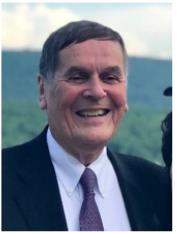
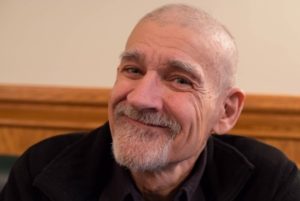
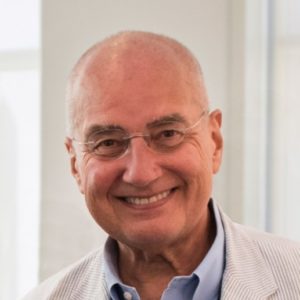
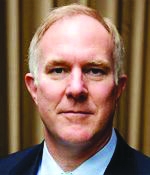
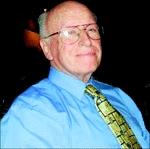
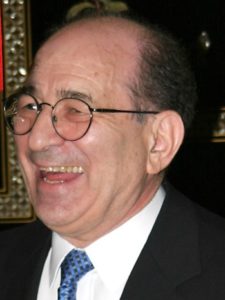
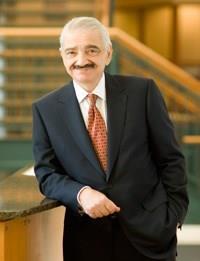

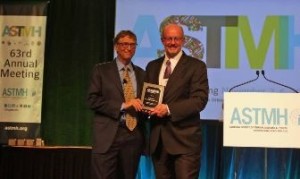
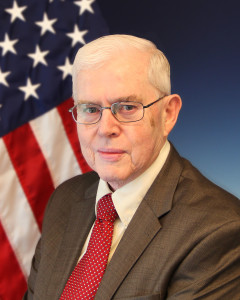
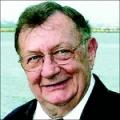
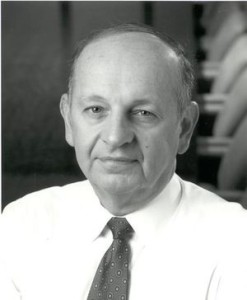
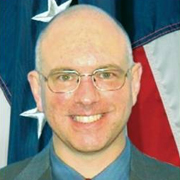
 Follow DARPA On Facebook
Follow DARPA On Facebook Follow DARPA On Twitter
Follow DARPA On Twitter Follow DARPA On Instagram
Follow DARPA On Instagram Follow DARPA On Youtube
Follow DARPA On Youtube